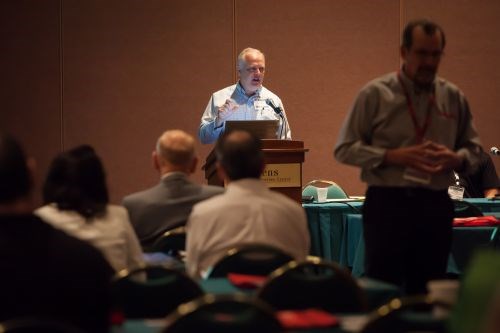Lessons from Amerimold 2013 – Part 3: Moldmakers are in the Plastics Ind.
I had the pleasure of participating in a brainstorming session at the amerimold 2013 where one of the ideas discussed was the development of some industry statistics for the moldmaking sector.

I had the pleasure of participating in a brainstorming session at the amerimold 2013 tradeshow and conference held earlier this month in Rosemont, IL where one of the ideas discussed was the development of some industry statistics for the moldmaking sector. Moldmaking Technology magazine compiles and reports their Moldmaking Business Index each month, and while we believe this is an excellent indicator of current business conditions for moldmakers, it is less effective as a predictor of future activity levels and trends. The U.S. Census Bureau also compiles and reports some data on the mold and die industry, but this is annual data only and it is reported quite late. Plus, it includes shops that are not necessarily plastic moldmaking shops.
So the question still remains—can we create an indicator or a set of data series (in what economists would call a "model") for the moldmaking industry—that would provide useful information about future demand and other market conditions for plastics moldmakers? One savvy industry veteran stated that he did not believe this was possible. He said that business conditions in his shop were extremely volatile, and he has never seen a data series that could be reliably used as a leading indicator for new orders for molds. This industry, he proclaimed, is just too unpredictable.
I agree that business conditions in individual shops are volatile, but I believe there are some indicators that portend the direction of total demand for plastics molds. First, it is important that moldmakers consider themselves part of the plastics industry, not the metalworking industry. I recognize that moldmakers cut metal, and that many mold shops evolved from machine shops. But shops that specialize in plastics molds do not exist in a vacuum. They depend on customers who are making parts out of plastic, and these customers depend on consumers who I products that contain plastics parts.
A very simple, but useful model can be stated thusly: if the market is steadily demanding more plastic parts, then the demand for plastics molds and machinery will also rise. Many moldmakers think that the demand for molds is a leading indicator itself—a leading indicator of production of plastics parts. This is because you can't make a part without first making a mold. But this view of the industry is too narrow. Demand for new molds and new equipment is dependent on rising demand for all types of plastics parts. Rising demand generates rising profits, and rising profits are the lifeblood of rising demand for capital equipment such as mold and tooling.
So there are some indicators that moldmakers should use for longer-term planning purposes. I will be happy to discuss these with anybody who wishes to contact me. But we could do better as an industry. It will take some creativity, most of all it will take some cooperation. Proper planning is essential if moldmakers hope to compete successfully in the global marketplace. Better industry statistics will help, but it is up to us to create them.
Related Content
-
The Role of Social Media in Manufacturing
Charles Daniels CFO of Wepco Plastics shares insights on the role of social media in manufacturing, how to improve the “business” side of a small mold shop and continually developing culture.
-
ICYMI: MMT Chats: True Leadership Leads to Mentoring, Part 1
This trio from TK Mold and Engineering in Romeo, Michigan, joins me to discuss the role of leadership and culture in mentorship. This episode is brought to you by ISCAR with New Ideas for Machining Intelligently.
-
Making Quick and Easy Kaizen Work for Your Shop
Within each person is unlimited creative potential to improve shop operations.









_300x250 1.png;maxWidth=300;quality=90)




.jpg;maxWidth=300;quality=90)
_970x250 1.png;maxWidth=970;quality=90)